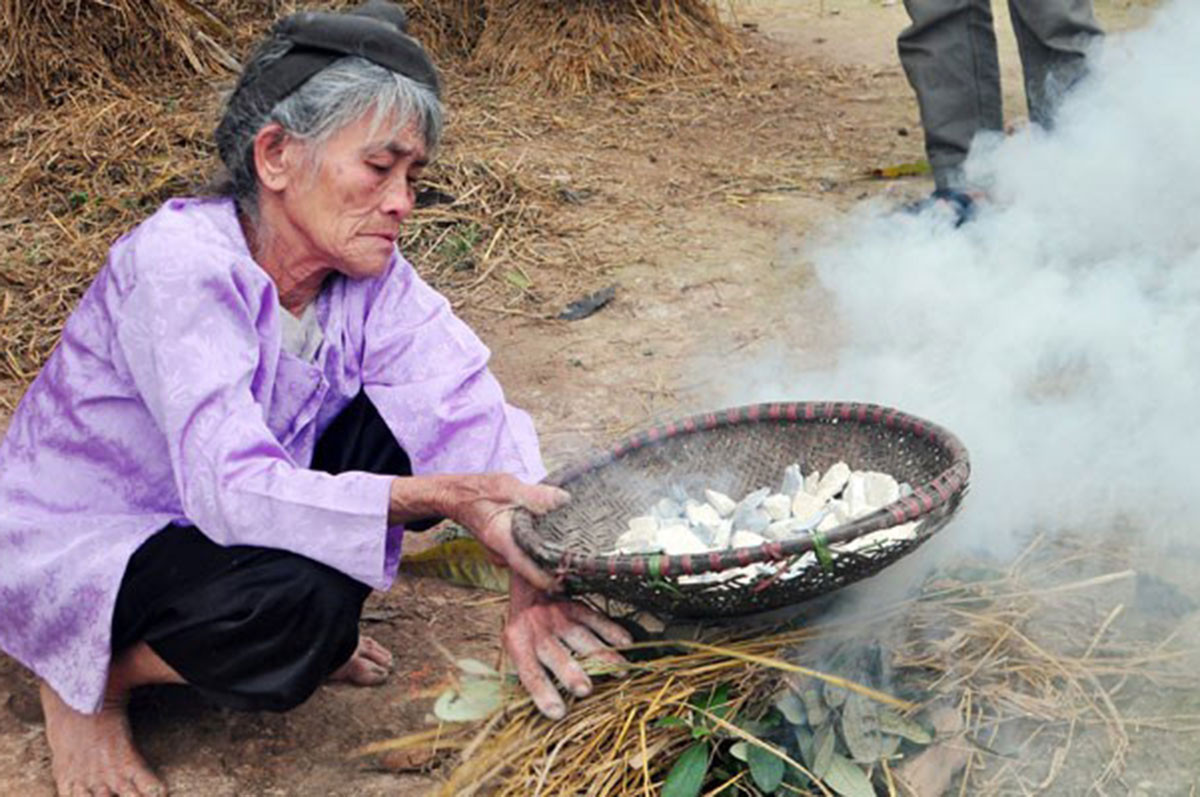
The edible soil is a ‘specialty’ in Lap Thach, Vinh Phuc province. There is a village called ‘lang an dat’ (soil eating village) or ‘lang dac san’ (specialty village).
Young people in the village now don’t eat much soil like their parents and grandparents did in the past. However, the elderly still consider soil a favorite dish, indispensable every day. Many people still smoke soil to eat it like candy.
No one knows when villagers began eating soil, but local people all affirmed that the habit of eating soil has existed for many years. Elderly people say they have seen grandparents eating soil since they were born.
The soil eaten by Lap Thach locals is not the common soil used for cultivation, but is a kind of special soil, called ‘dat ngoi’ or kaolin. This kind of soil can only be found in Lap Thach area.
Kaolin is a white clay that is very friable and can withstand high temperatures. The main ingredients in the soil are kaolinite and other minerals. Kaolin is considered safe for humans.
The characteristics of this type of soil are brittle, with an ivory white color, and resistance to high temperatures. It can be eaten raw, but will be tastier if it is processed thoroughly.
At first, people scrape the outer layer to get the inner white part, and then split into small pieces and ‘cook’ it with straw smoke.
To make the soil more delicious, when smoking it, people burn sim (Rhodomyrtus tomentosa) leaves and then dry the soil above the fire. The smoke from burnt sim leaves will absorb into the soil and create a specific taste.
Soil addicts in the village all say when the soil turns slightly yellow and sim leaves give a smell, it is time to enjoy it.
When eaten, this type of soil has the smell of smoke, slightly fragrant, and a bit dark. It is a bit salty. People may feel like they are eating dry food but they are not thirsty.
Previously, dat ngoi could be found easily on mountains. However, because of the mass exploitation through generations, the volume now is very small. In order to get dat ngoi, people have to dig holes, 3-7 meters in depth, until they can see a bed of soil as white as chalk.
When seeing this soil layer, they need to use a hammer to dig up every part of the soil.
There are two types of eatable dat ngoi, including milky white and green. People with healthy teeth can eat green soil, which is hard while elderly people can only eat milky white tiles.
Many people come to Lap Thach to see eatable soil. However, not many dare to try it. According to Lap Thach’s people, once addicted to the dish, people want to eat it every day. They never forget the fatty taste of the soil, plus the fragrance of freshly smoked sim leaves.
In the years of war, with food shortages, local people dug the soil to eat. They even considered making ‘soil cakes’ as a livelihood.
In the past, people from neighboring districts and provinces also came there to buy soil to give to their relatives as presents.
About 20-30 years ago, this kind of soil was sold en masse at markets. Lap Thach was once the supplier of edible soil to many localities, from Tam Duong, Vinh Tuong, Lam Thao, and Phu Ninh to Ha Giang and Tuyen Quang.
Currently, smoked soil is priced at VND150,000 per 0.5 kilogram.
Asked about the reasons to eat soil, elderly people in the village said this is a habit. People believe that this kind of soil is good for human’s health as it provides micronutrients the human body lacks.
People eat soil also because they believe it can cure many diseases. Many experts have visited Lap Thach to research the soil, but no scientist has proven that the soil is good for health.
Hanh Nguyen